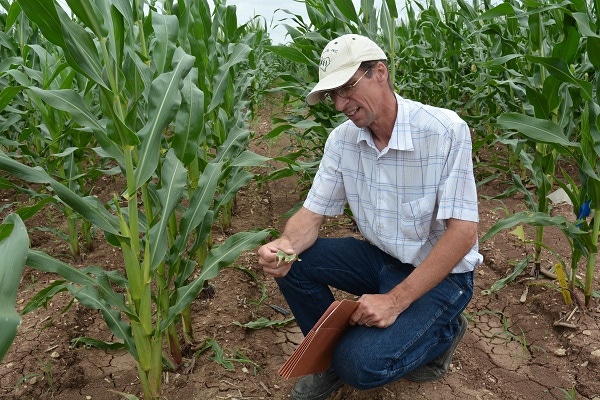July 10, 2014

Applying a fungicide early to corn will help prevent southern rust from developing on corn leaves, even if the farmer can’t visually see the rust infection.
Texas A&M AgriLife Extension Service plant pathologist Tom Isakeit at a recent field day near College Station said southern rust, a foliar disease, can be problematic for growers and threaten yields.
Isakeit offered practical advice and application methods at the 2014 Crop Tour, sponsored by AgriLife Extension and BASF Corporation, at the Texas A&M University field laboratory near College Station, which serves as a research and teaching platform for Texas A&M AgriLife.
More than 100 area producers, consultants and industry partners attended the field day. Southern rust, caused by the fungus Puccinia polysora, is the most important foliar disease of corn in the Upper Coast region of Texas, Isakeit said. In some wetter years, when very susceptible hybrids are grown, it may require a fungicide treatment to minimize yield loss. Read more.
You May Also Like




